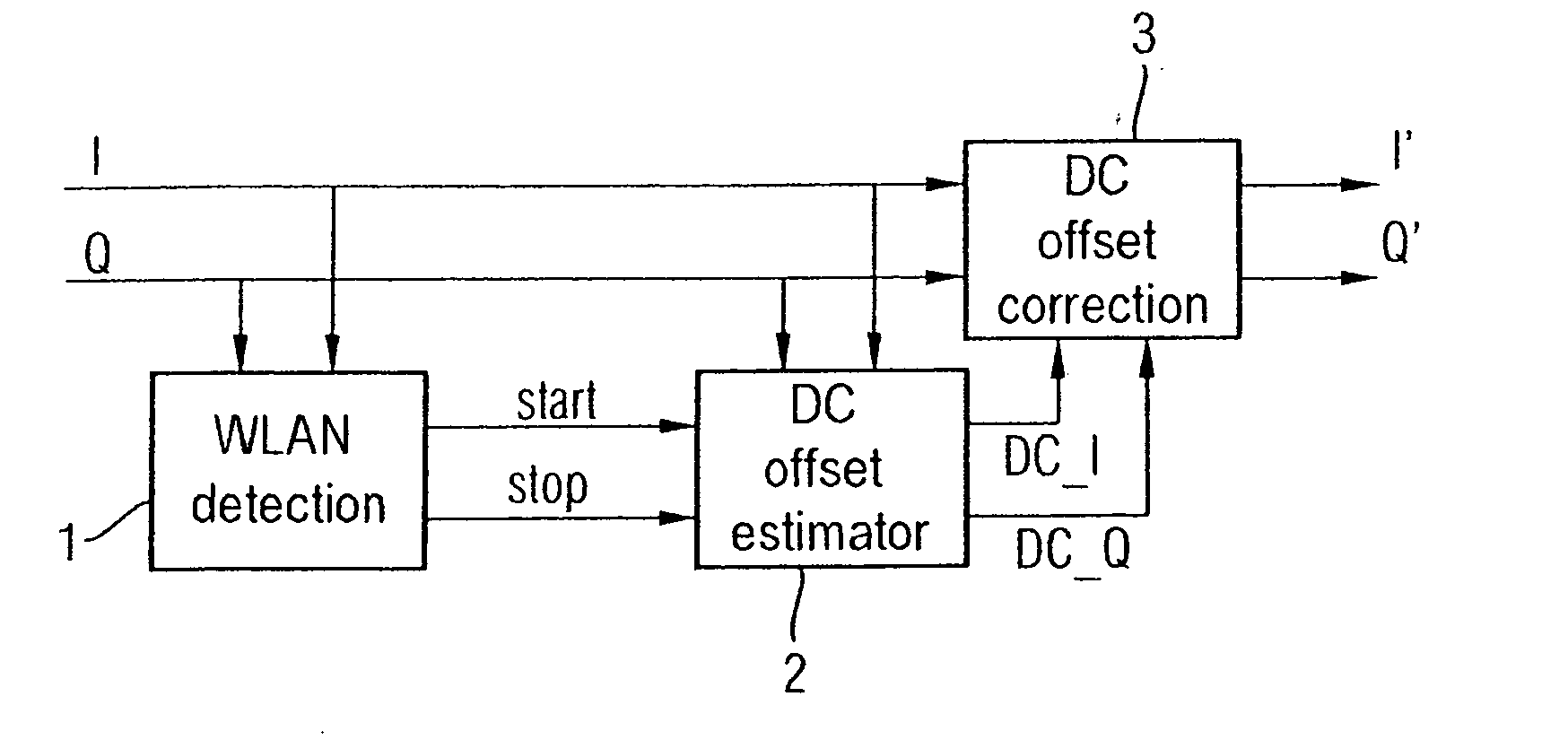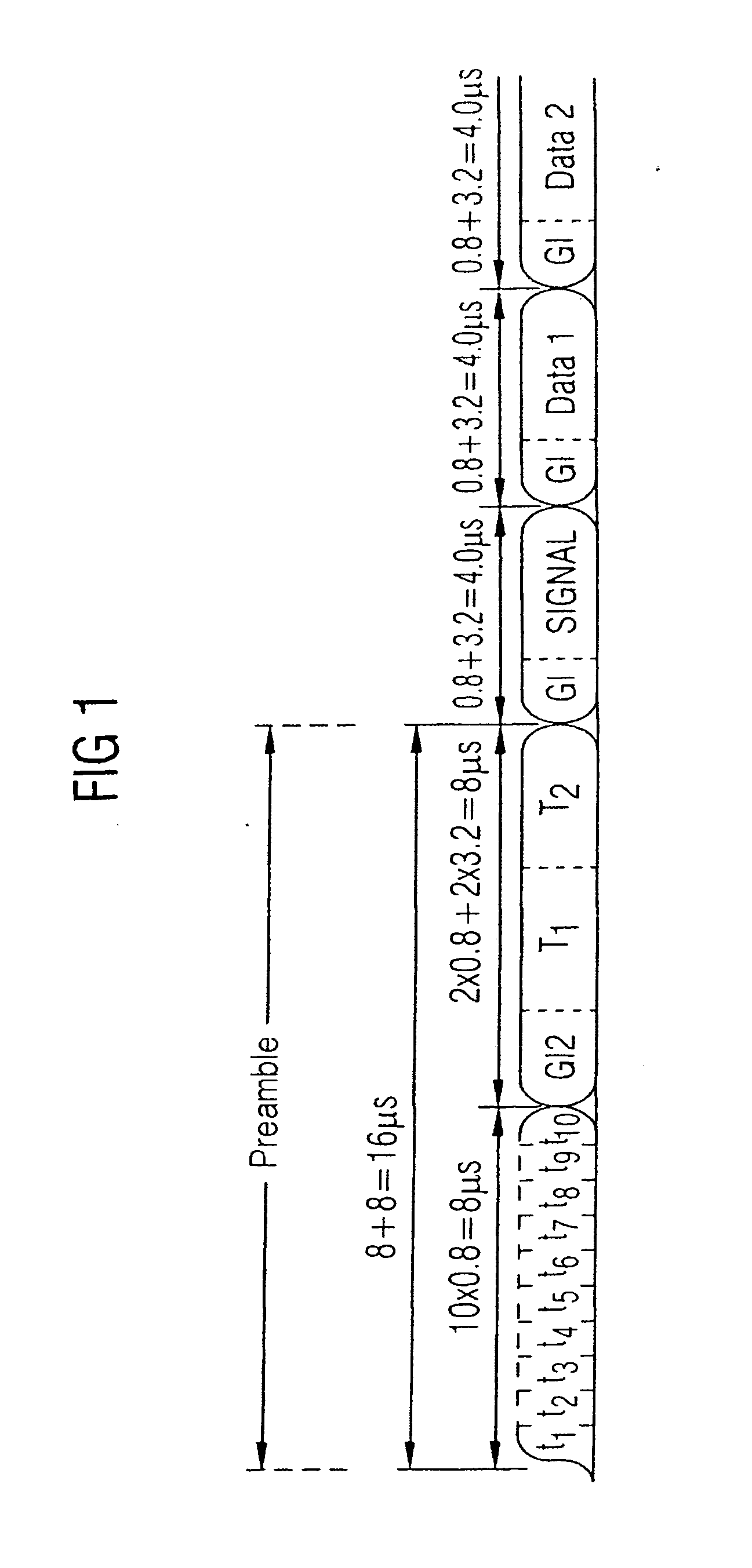DC offset estimation and compensation in OFDM radio receivers by weighted averaging over a section of the training sequence
a radio receiver and weighted averaging technology, applied in the direction of dc level restoring means or bias distort correction, line-faulst/interference reduction, baseband system details, etc., can solve the problem that all carriers are adversely affected by this additional noise, the reliability of the dc offset estimation process can be improved, and the influence of noise can be reduced.
- Summary
- Abstract
- Description
- Claims
- Application Information
AI Technical Summary
Benefits of technology
Problems solved by technology
Method used
Image
Examples
Embodiment Construction
[0063] As is shown in the block diagram in FIG. 7A, an OFDM received signal is subjected in the reception path of an OFDM radio receiver to quadrature demodulation, in the process of which an I (in-phase) component and a Q (quadrature) component are produced. Both signal components are supplied to a WLAN detection unit 1, whose object is to detect the presence of a WLAN signal in accordance with one of the WLAN or ETSI Standards mentioned initially, by detection of the short training signal sequence. As soon as this part of the preamble has been detected, the WLAN detection unit 1 signals this fact by means of a start signal to a DC offset estimator 2. It likewise transmits a stop signal to the DC offset estimator 2 when the end of the short training signal sequence has been reached.
[0064] The DC offset estimator 2 can carry out the estimation of the DC offset between the start signal and the stop signal. Once the end of the short training signal sequence has been reached, the DC o...
PUM
 Login to View More
Login to View More Abstract
Description
Claims
Application Information
 Login to View More
Login to View More - R&D
- Intellectual Property
- Life Sciences
- Materials
- Tech Scout
- Unparalleled Data Quality
- Higher Quality Content
- 60% Fewer Hallucinations
Browse by: Latest US Patents, China's latest patents, Technical Efficacy Thesaurus, Application Domain, Technology Topic, Popular Technical Reports.
© 2025 PatSnap. All rights reserved.Legal|Privacy policy|Modern Slavery Act Transparency Statement|Sitemap|About US| Contact US: help@patsnap.com



